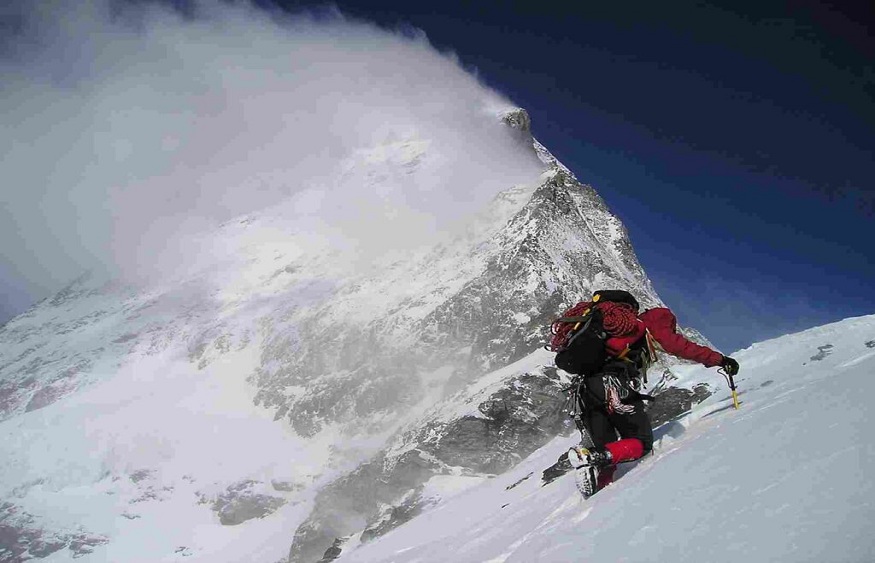The Himalayas have long been the epitome of mountaineering adventure. In its vast expanse, Nepal’s Everest region, known as the Khumbu, stands out as the crown jewel. This region is home to the majestic Mount Everest, the world’s highest peak, and a plethora of trekking peaks that offer both novice and experienced climbers an unparalleled adventure.
Two such jewels are Island Peak and Mera Peak.
Island Peak (ImjaTse): A Beginner’s Delight
Rising to 6,189 meters, Island Peak or ImjaTse offers climbers a taste of high-altitude mountaineering without the extremities of an 8,000-meter peak. Named for its resemblance to an island amidst a sea of ice, this peak is ideal for those looking to cut their teeth in the world of Himalayan mountaineering.
The journey to Island Peak typically begins with the classic Everest Base Camp trek. As trekkers wind their way through Sherpa villages, monasteries, and lush forests, they acclimatize, preparing themselves for the summit bid. The climb involves a mix of trekking, glacier navigation, and a final push requiring some basic rock scrambling.
Mera Peak: Scaling Greater Heights
Mera Peak, standing at 6,476 meters, is Nepal’s highest trekking peak. While it’s slightly more challenging than Island Peak, it’s still suitable for climbers with moderate experience. The reward? An unparalleled panorama includes five of the world’s 8,000-meter peaks: Everest, Lhotse, Cho Oyu, Makalu, and Kangchenjunga.
Unlike the more trodden paths of the Everest Base Camp trek, the journey to Mera Peak’s base offers a sense of solitude, passing through remote forests, traditional villages, and serene high-altitude lakes.
Why Climb in the Everest Region?
Beyond the sheer thrill of mountaineering, the Everest region offers a rich cultural tapestry. It’s a land where Tibetan Buddhism thrives amidst the backdrop of the world’s highest peaks. Climbers experience the warm hospitality of the Sherpa community, savour traditional cuisine, and participate in centuries-old festivals and rituals.
Moreover, the region offers an ecological paradise. The Sagarmatha National Park, a UNESCO World Heritage site, is teeming with biodiversity, including snow leopards, red pandas, and many bird species.
Embarking on the Adventure
Before attempting peaks like Island or Mera, it’s crucial to be adequately prepared. This includes physical fitness training, familiarizing oneself with mountaineering equipment, and understanding the effects of altitude. Additionally, always ensure experienced guides and Sherpas lead the expedition. Their local knowledge and mountaineering expertise are invaluable.
Conclusion
Nepal’s Everest region, with its towering peaks, vibrant culture, and pristine nature, offers mountaineers an unmatched experience. Whether it’s the relatively gentler slopes of Island Peak or the slightly more demanding Mera Peak, climbers are assured of an adventure that’s as rewarding as it is challenging.
In the heart of the Himalayas, every step taken, every height scaled, is not just a physical accomplishment but a journey of inner discovery. The peaks of the Everest region beckon – it’s a call to adventure, a call to explore the limits of human potential amidst the grandeur of nature.

